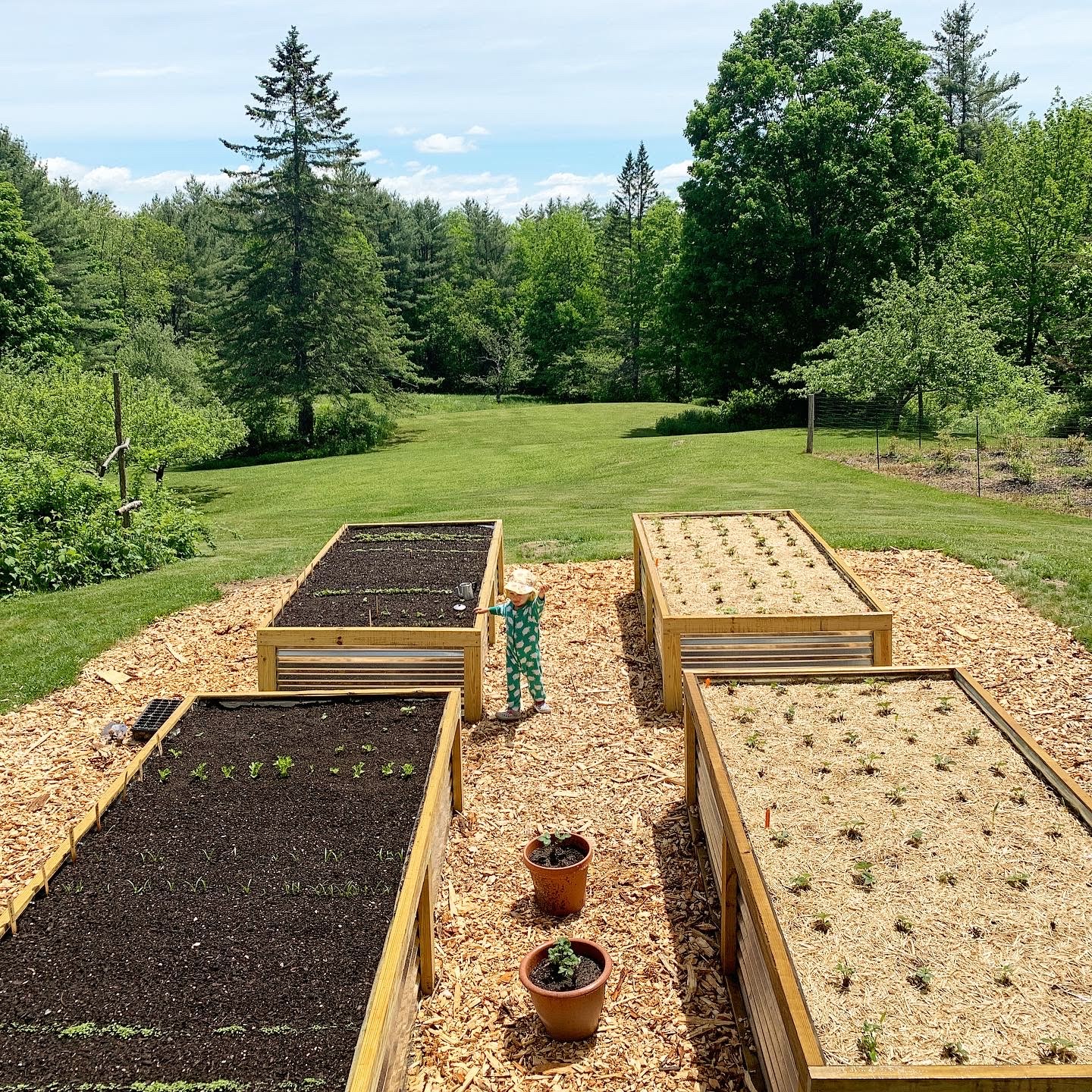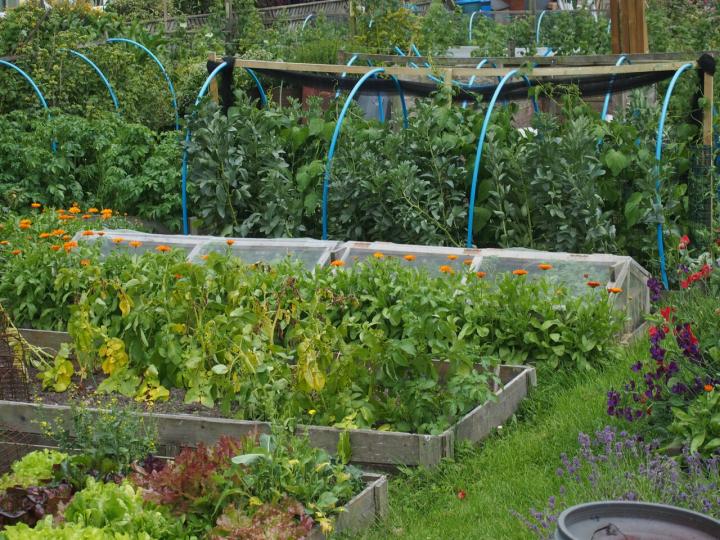Preparing for the Seasons in Homestead Gardening
Preparing for the Seasons in Homestead Gardening
Blog Article
Learn Just How to Cultivate a Thriving Gardening Atmosphere for All Ability Degrees
Producing a growing yard is a multifaceted venture that can be embraced by individuals at any type of skill level. By checking out vital parts such as dirt health and wellness, proper plant choice, and seasonal care regimens, one can create a sustainable gardening method that produces rewarding outcomes. Recognizing exactly how to evaluate and enhance your garden space lays the structure for success. The intricacies of implementing these concepts commonly present challenges that can prevent even the most passionate newbie. What techniques can be used to get rid of these obstacles and promote a truly successful atmosphere?
Comprehending Your Garden Room
In the realm of horticulture, understanding your garden space is critical to cultivating a growing landscape (Homestead Gardening). The primary step in this endeavor includes analyzing the specific attributes of your story. Variables such as dirt structure, sunshine direct exposure, and drainage play critical duties in figuring out the suitability of your garden for different sorts of plants
Begin by conducting a dirt examination to analyze pH levels and nutrition material, which will educate any required changes. Furthermore, observe just how much sunshine your space gets throughout the day. Different plants have varying light demands; some prosper in complete sunlight, while others favor partial or full shade.

Finally, assess the offered space and plan accordingly. This consists of taking into consideration plant heights and spread to guarantee sufficient room for growth without congestion. By obtaining a comprehensive understanding of your garden room, you established the foundation for a successful horticulture experience.
Picking the Right Plants
Picking the right plants for your garden requires careful factor to consider of different elements, including climate, soil problems, and individual preferences. Beginning by analyzing your regional environment, as certain plants flourish specifically temperature level varieties and weather patterns. As an example, tropical plants may not endure in chillier areas, while sturdy perennials can endure harsh winters months.

Consider your individual preferences, consisting of aesthetic charm and maintenance degrees. Choose whether you favor dynamic blossoms, lush vegetation, or edible plants. Furthermore, consider the moment and initiative you are prepared to buy plant care, as some ranges require more focus than others.
Lastly, think of the garden's design and light direct exposure. Sunshine patterns throughout the day will certainly influence your options-- some plants call for full sun, while others prosper in color. By thoughtfully analyzing these elements, you can create a unified and effective garden tailored to your setting and tastes.
Crucial Horticulture Devices
A fully equipped gardener can dramatically enhance their gardening experience and outcomes. Important gardening tools are fundamental to cultivating a successful garden, regardless of skill level. First, a sturdy spade is important for digging and turning soil, while a trowel enables for accurate planting and transplanting of smaller plants.
Trimming shears are essential for keeping plant health and wellness by eliminating overgrown or dead branches, advertising far better air flow and growth. Additionally, a hand rake is useful for clearing particles and freshening the soil, ensuring optimum problems for plant roots.
Gardening gloves shield hands from sores, thorns, and chemicals, making them a necessary accessory. A watering can or hose with a flexible nozzle makes sure that plants get adequate dampness without overwatering.
Finally, consider buying a sturdy wheelbarrow for transporting dirt, plants, and tools around the yard efficiently. By putting together a quality toolkit that consists of these vital items, garden enthusiasts click over here can tackle numerous tasks with self-confidence and simplicity, leading the means for a thriving horticulture atmosphere. Bear in mind, the right tools not just improve performance but additionally enhance the general enjoyment of the gardening process.
Dirt Prep Work and Maintenance
Quality dirt is the structure of a successful garden, making appropriate prep work and upkeep critical for healthy plant growth. Based on the test results, changes can be made to maximize dirt problems for specific plant requirements.
Integrating organic matter, such as compost or well-rotted manure, is vital for boosting dirt framework and fertility. This not just boosts nutrient accessibility however likewise promotes helpful microbial task. In addition, correct water drainage is vital; heavy clay dirts might call for the enhancement of sand or perlite to boost oygenation.
Routine maintenance of soil health and wellness consists of mulching, which conserves dampness and suppresses weeds. Revolving plants every year assists avoid nutrient depletion and reduces pest and condition threats. It is additionally content important to check it out stay clear of over-tilling, which can interrupt soil structure and injury valuable microorganisms.
Inevitably, a constant dedication to soil prep work and upkeep will lead to a prospering garden, guaranteeing that plants receive the vital nutrients they need for robust development and efficiency.
Seasonal Treatment and Administration

In springtime, concentrate on growing new seeds and plants, while likewise conducting dirt tests to change nutrient shortages. On a regular basis look for parasites and illness, as these can multiply with the warming weather condition. Summer needs consistent watering and mulching to preserve moisture, together with pruning for much better air circulation.
As autumn strategies, it's time to prepare the garden for inactivity. This consists of gathering plants, cleaning up particles, and applying a layer of mulch to secure plant origins from frost. Think about growing cover plants to enrich the soil throughout the cold weather.
Check frameworks like greenhouses for damages and ensure correct insulation for sensitive plants. By adapting your gardening practices to the seasonal cycles, you can foster a growing atmosphere that supports plant health and wellness year-round.
Conclusion
In verdict, growing an effective yard calls for a thorough understanding of essential principles such as dirt make-up, sunshine direct exposure, and appropriate plant option. Carrying out effective soil prep work and upkeep strategies, in addition to using the right devices, promotes an optimum expanding setting. Normal seasonal treatment and administration methods even more enhance plant health and performance. By sticking to these fundamental guidelines, individuals in all ability levels can achieve a prospering yard that contributes to both aesthetic enjoyment and environmental sustainability.
Picking the right plants for your garden calls for cautious factor to consider of different aspects, including environment, soil problems, and personal choices. Conduct a soil examination to identify pH degrees and nutrition content, which will certainly direct you in picking plants that will prosper in your garden.Last but not least, consider spending in a sturdy wheelbarrow for transporting soil, plants, and devices around the garden effectively.Quality dirt is the foundation of an effective garden, making appropriate prep work and maintenance critical for healthy and balanced plant development. Homestead Gardening.In conclusion, growing an effective garden requires a thorough understanding of important concepts such as dirt composition, sunshine direct exposure, and suitable plant option
Report this page